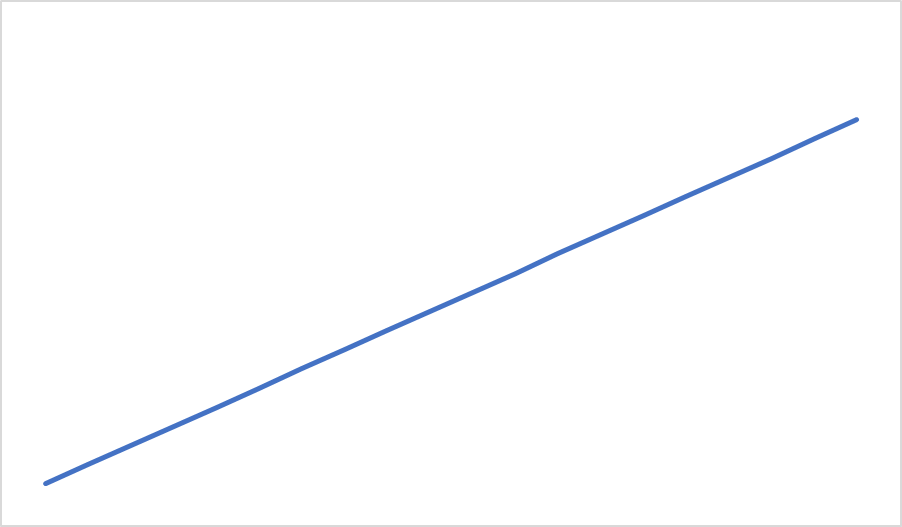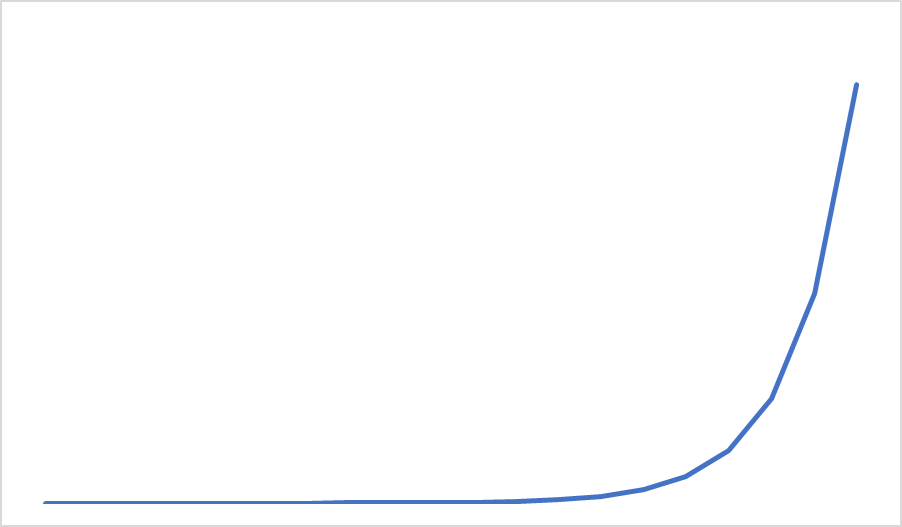But first, a story
A long time ago in a far away land, an emperor’s daughter fell ill, and no one could help. At the end of his rope, the emperor put out a decree, asking for help.
A young peasant came forward and offered a mixture of herbs he gathered from the forest. His mother had suffered from the same illness, so he knew how to treat it. A few days later, the princess was good as new.
“I owe you much,” the emperor said. “How can I repay you?”
The peasant’s friends told him to ask for a million grains of rice. Or ten million. A hundred million grains of rice!
But the peasant was wise. He knew that if the emperor heard too high a number, he would feel insulted. And insulting emperors was a sure way to decrease life expectancy.
So instead he said, “Your highness, I suggest this: take a chess board. Place a single grain on one square. On the next, place two. Then four. And so on, doubling it for each square of the board.”
The emperor scoffed. That would surely be a pittance to pay. How much could that single grain of rice grow to?
“Very well. I hereby pledge to pay you what you have asked, on my honor.”

Photo by Jocelyn Morales on Unsplash
So the emperor’s scribes began to count grains. They placed a single grain on the first square. Two on the next. Four on the next. By the time they reached the end of the first row, they were putting 128 grains of rice on the final square.
That’s about two grams.
By the end of the next row, the final square had 32,768 grains of rice, which was a bit more than a pound. Still not much. The scribes began to chuckle. What a foolish peasant, who had asked for so little!
At the end of the third row, the final square had 8,388,608 grains of rice. That’s about 289 pounds of rice.
The scribes stopped chuckling at that point.
By the time the scribes got to the final square on the board, they needed to pile up 9,223,372,036,854,775,808 grains of rice.
This is about 100,000 tons of rice.
You might be asking the same question the emperor was asking his scribes:
HOW DID THIS HAPPEN?
The peasant made use of something called the power of compounding. If you’re wondering why the emperor even agreed to this, don’t be too hard on him. Our minds have a hard time predicting compound growth like this.
Instead of growing in a straight line like this:

Compound growth looks like this:

Wouldn’t it be great if you could be like the peasant and do the same thing with your money?
Here’s the good news: it can!
Compound Growth in Investments
Investing is one of the most accessible ways to make use of this type of growth for your money.
It might not seem like much at first. But as the years go by, you’ll see that compound growth really kick in!
Let’s take Warren Buffett as an example. He’s one of the richest people in the world. How did he become so wealthy?
Part of it has to do with his investing ability. But mostly, he’s gotten such fantastic returns because he’s been investing for so much time.
Warren Buffett is currently 90 years old, and has a net worth of about $110 billion. He’s been investing for about 75 years, since he was 15. What if he’d retired when he hit 65? Well, he would only have about $17 billion. That’s only about 15% of his current wealth.
Put it another way, he’s made 85% of his money since reaching retirement age!
It took him 83 years to make $58.5 billion dollars. But only another 7 years to make another $51.5 billion.
That’s the power of compounding!
How can you put this to work for you?
It’s important to understand the importance and power of Now. Time is the only resource we can’t create more of. And time is the most important factor when determining how much your money can grow.
By making a choice to invest now, you maximize the amount of time your investments can grow.
If you want to invest, but don’t know where to begin, sign up for a Free Bronze Account and schedule a meeting with a financial advisor. We’ll be able to help you build a portfolio appropriate for your life stage.